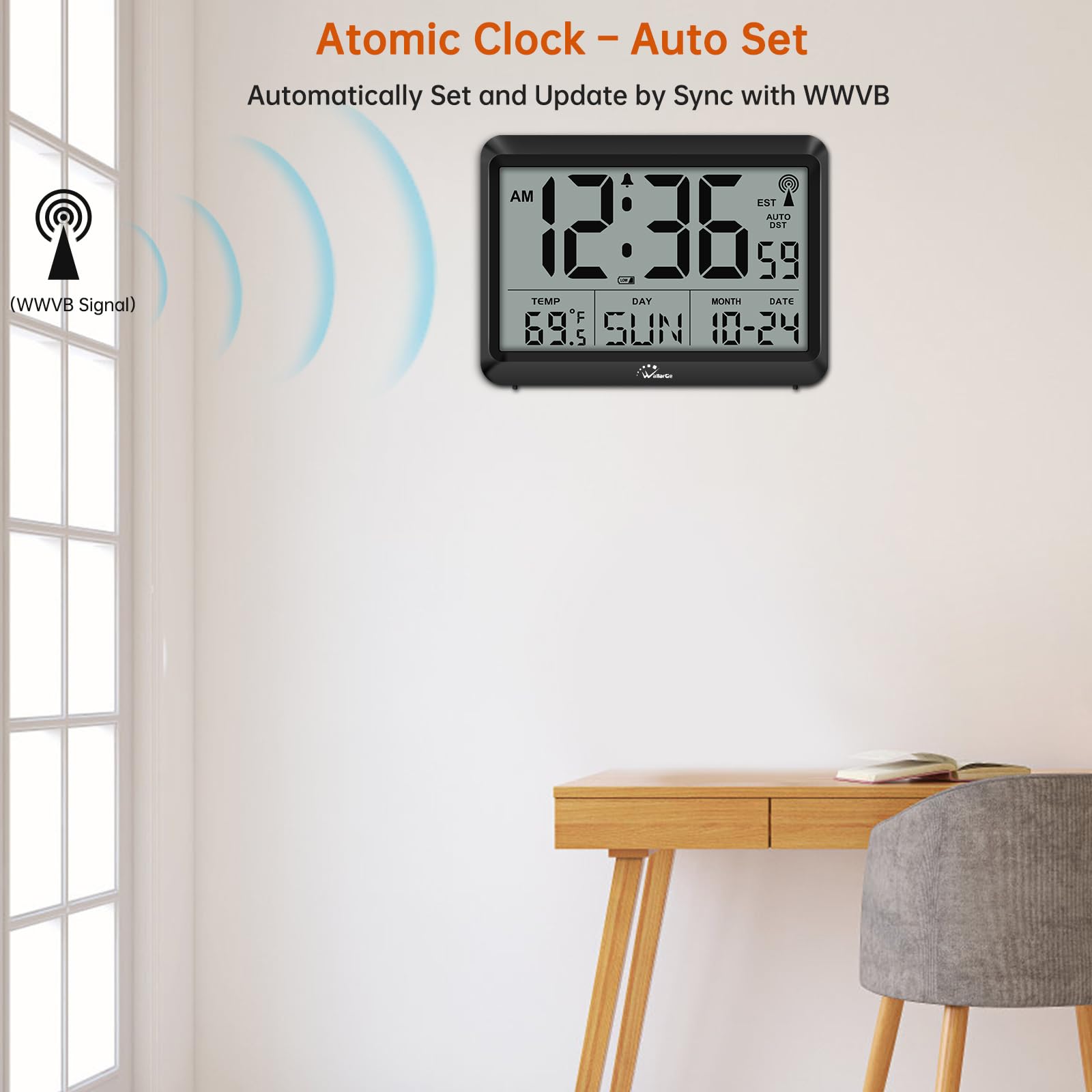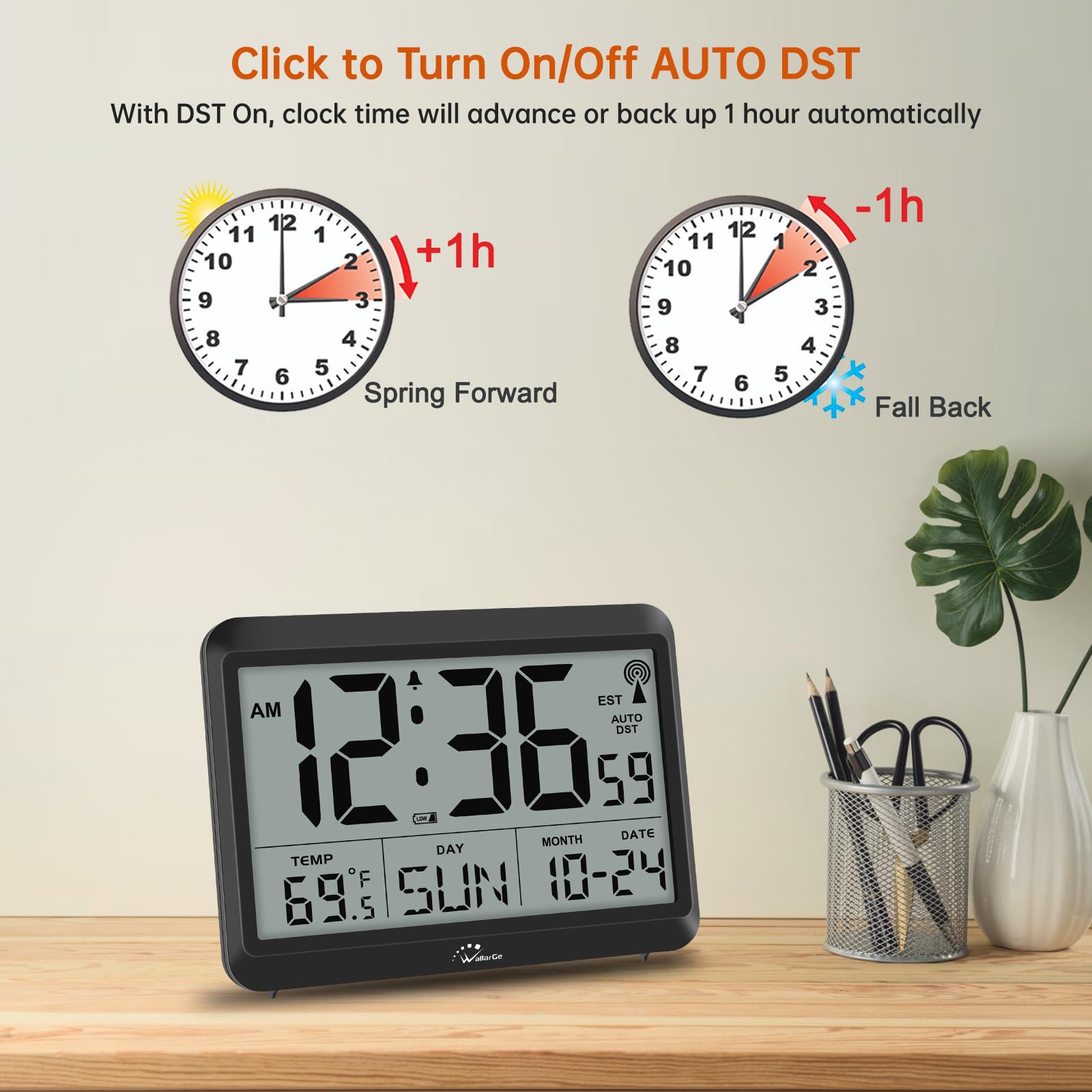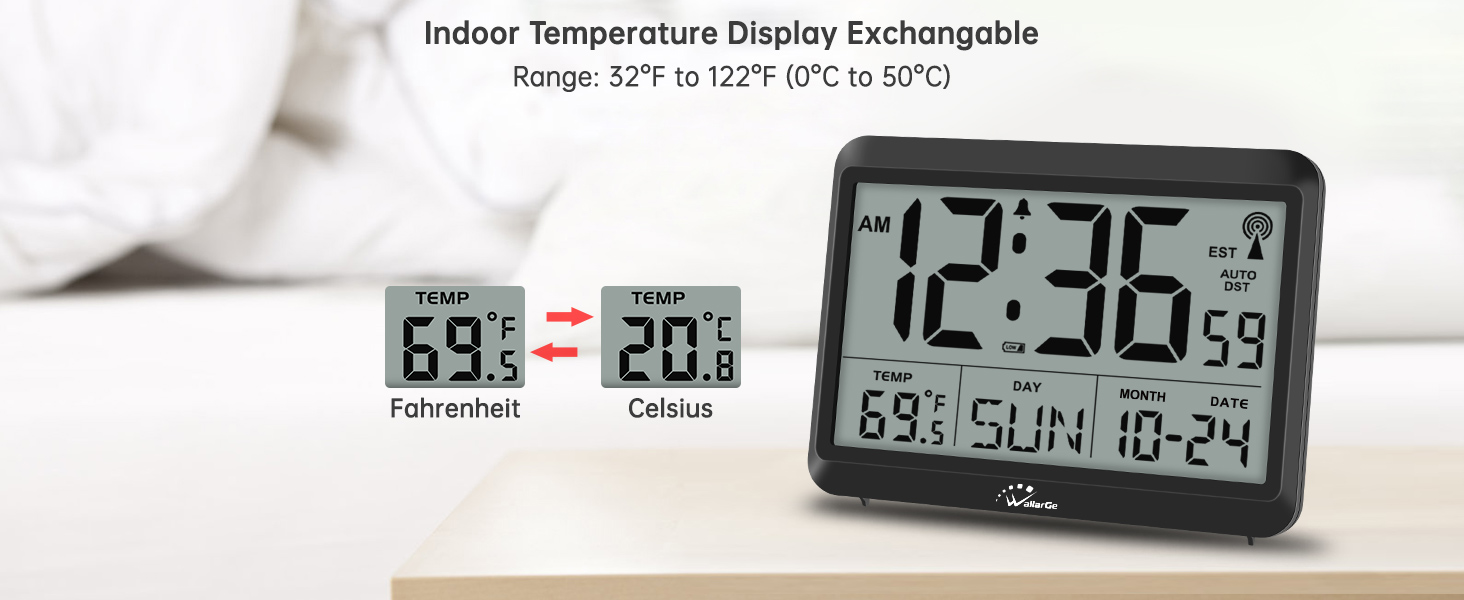Customer Services
Copyright © 2025 Desertcart Holdings Limited
Desert Online General Trading LLC
Dubai, United Arab Emirates









⏳ Stay ahead of time, effortlessly stylish.
The WallarGe Atomic Digital Wall Clock is a battery-operated, self-setting timepiece featuring automatic WWVB synchronization, selectable US time zones, and a large, clear LCD display showing time, temperature, date, and day. It includes auto daylight saving adjustments, silent operation, and a convenient alarm function, making it a perfect blend of precision and modern convenience for any professional space.



Trustpilot
5 days ago
1 month ago